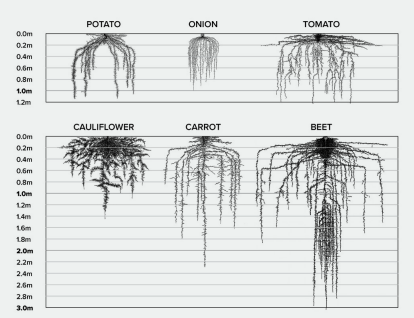#VariableRateIrrigation #PotatoCrop #WaterUseEfficiency #PrecisionAgriculture #CropManagement #AgriculturalTechnology
Variable rate irrigation is an innovative and precise approach to optimize crop water use in Australian potato fields. The vast diversity in soil type and topography across these fields makes it challenging to apply a one-size-fits-all irrigation strategy. However, with variable rate irrigation, farmers can tailor their water application based on specific field characteristics, resulting in improved crop yield and quality.
Development of Variable Rate Irrigation
Variable rate irrigation relies on advanced soil mapping techniques to identify variations in soil water holding capacity. By understanding these differences, farmers can determine the appropriate amount of water needed in specific areas of their fields. However, successful implementation of variable rate irrigation extends beyond soil mapping.
Factors such as crop growth stages, topography, and climatic conditions must also be considered to create accurate irrigation prescriptions. As the growing season progresses and environmental conditions change, multiple prescription maps may be required to meet the evolving water requirements of the potato crop.
Consequences of Development
- Improved Crop Water Use Efficiency
With variable rate irrigation, water application is optimized, ensuring that each part of the field receives the right amount of water. This precision leads to improved water use efficiency, minimizing wastage and conserving water resources. - Enhanced Uniformity in Potato Yield and Quality
Consistent water distribution across the field helps achieve uniform potato growth and development. This results in a more even yield and better tuber quality, leading to increased profitability for farmers. - Increased Crop Vigor and Yield
By prioritizing irrigation scheduling and monitoring the water status of potato crops daily, farmers can avoid moisture stress. Adequate and timely irrigation promotes healthy crop growth, higher yields, and larger tubers. - Prevention of Water-Related Issues
Under-irrigation can lead to poor crop vigor, smaller and misshapen tubers, reduced yields, and even tuber spoilage. On the other hand, over-irrigation can create soil saturation, which encourages the development of pathogens, particularly in warm conditions. Variable rate irrigation helps mitigate these water-related problems by providing precise water amounts where and when they are needed.

Variable rate irrigation offers immense potential for optimizing crop water use and improving potato yield and quality in Australian fields. By considering the variability in soil type, topography, and climatic conditions, farmers can create customized irrigation prescriptions that adapt to the changing needs of the crop during the growing season. Embracing this technology and making irrigation a top priority in crop management can lead to more efficient water usage, healthier potato plants, and ultimately, better economic outcomes for potato farmers.
Source: Australian Potato Growers








